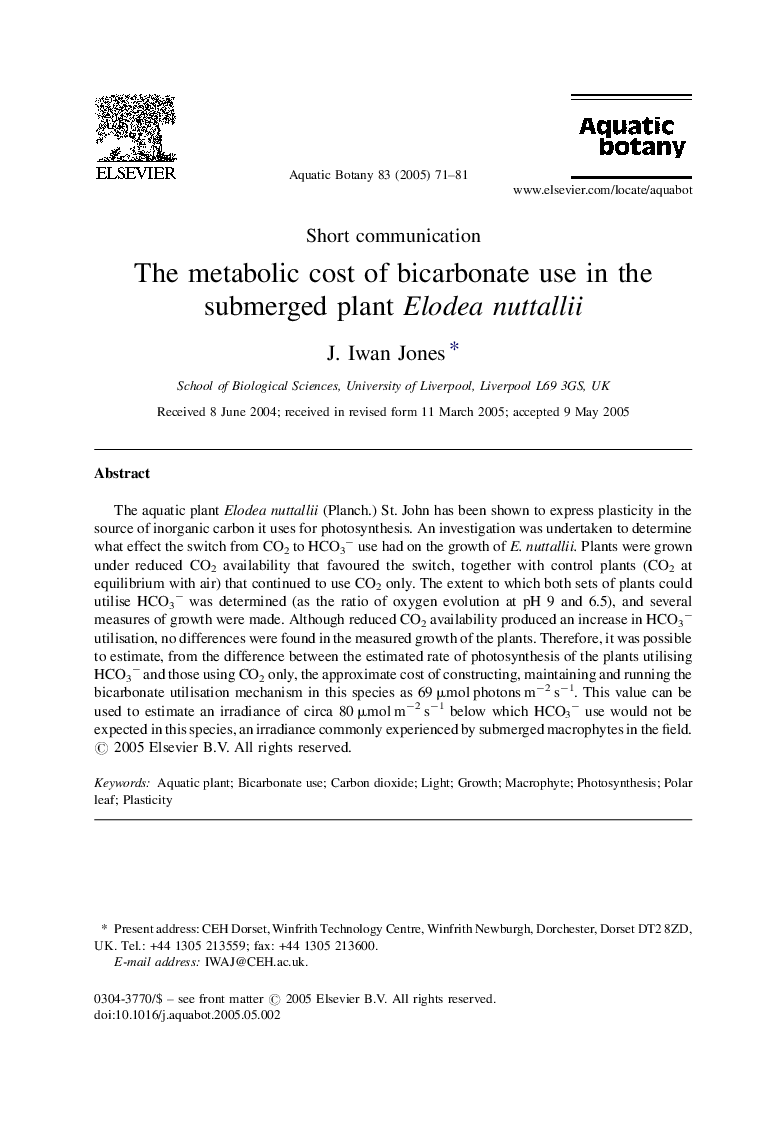| Article ID | Journal | Published Year | Pages | File Type |
|---|---|---|---|---|
| 9477582 | Aquatic Botany | 2005 | 11 Pages |
Abstract
The aquatic plant Elodea nuttallii (Planch.) St. John has been shown to express plasticity in the source of inorganic carbon it uses for photosynthesis. An investigation was undertaken to determine what effect the switch from CO2 to HCO3â use had on the growth of E. nuttallii. Plants were grown under reduced CO2 availability that favoured the switch, together with control plants (CO2 at equilibrium with air) that continued to use CO2 only. The extent to which both sets of plants could utilise HCO3â was determined (as the ratio of oxygen evolution at pH 9 and 6.5), and several measures of growth were made. Although reduced CO2 availability produced an increase in HCO3â utilisation, no differences were found in the measured growth of the plants. Therefore, it was possible to estimate, from the difference between the estimated rate of photosynthesis of the plants utilising HCO3â and those using CO2 only, the approximate cost of constructing, maintaining and running the bicarbonate utilisation mechanism in this species as 69 μmol photons mâ2 sâ1. This value can be used to estimate an irradiance of circa 80 μmol mâ2 sâ1 below which HCO3â use would not be expected in this species, an irradiance commonly experienced by submerged macrophytes in the field.
Related Topics
Life Sciences
Agricultural and Biological Sciences
Aquatic Science
Authors
J. Iwan Jones,
